The main pasture
Black Locust
In most parts of our country, black locust is one of the main bee pastures. Its importance cannot be overstated as the final result of beekeeping in some areas depends on it. In this article, we will cover its basic characteristics to help beekeepers make the best use of this important resource.
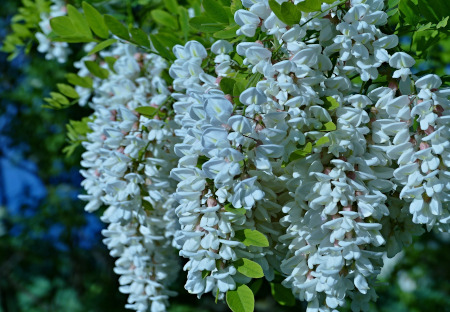
Black locust typically blooms in the first ten days of May, although in higher regions, it may begin blooming in the second half of the month or even later. The flowering time also varies based on climatic conditions. Roughly 40 days pass from the time the first buds appear on the black locust until it flowers, and sometimes, this period can be a few days longer. When the plum blossoms start, it is a sign that black locust will start blooming in about a month. Beekeepers should prepare their colonies by this time so that they can make the most of black locust as the main pasture. By the beginning of black locust flowering, the colonies should be strong and have the necessary working mood to collect nectar and process it into honey.
The flowers stay on the black locust for about 14 days or longer. Some black locust mutations bloom earlier while others bloom later, prolonging the grazing period.
With the migration of bees, two pastures can be used quite simply, and in exceptional cases, three. In the southern parts of our country, black locust blooms much earlier, and in the northern areas, later, so these benefits should be used. However, at altitudes of over 700 meters, black locust practically makes no honey intake, i.e., honey intake is very low, so it is not profitable to move bees to such terrains for the sake of black locust.
Black locust blooms very abundantly, and in full bloom, the entire crown turns white. It is one of the most stable bee pastures, as it blooms and produces honey almost every year in normal climatic conditions. In favorable years, the yield per hectare of black locust forest can be up to 1000 kilograms of honey, often more. The yield depends on the conditions for honey, the composition of the black locust forest, the strength of the bee colonies, and other factors.
Black locust secretes the most nectar at a temperature of about 25 degrees Celsius when the weather is quiet and there is enough moisture in the air. It is characteristic that black locust produces extremely large amounts of nectar and very small amounts of pollen.
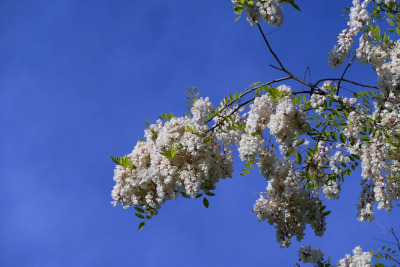
Black locust honey is known for its intense flavor, particularly around the fifth to seventh day after flowering. During this period, bee colonies under favorable conditions can bring up to 15 kilograms of nectar a day into the hives, making it crucial to expand the hive space. Two semi-extensions of Dadan-Blat's hive are required to process the nectar into honey; otherwise, the bees won't have enough space to store the nectar, leading to lower honey yields.
The narrowed space in the hive can also cause worker bees to lose their working mood and prepare for swarming, making it important to avoid swarming by expanding the hive space. Black locust honey has excellent quality, bright color, transparent, pleasant smell, and taste. It can last for over a year without crystallizing and up to two years in favorable conditions. It is highly sought after on both domestic and foreign markets, belonging to the group of the most expensive honeys. Leaving the frames with black locust honey as a reserve is advisable as it is also great for hibernating bee colonies.
Meadow Grazing
Meadow grazing is critical for successful beekeeping due to the variety of honey plants available, which differ in flowering time and quality. The grazing lasts a long time, making it essential for successful beekeeping. The years that are especially favorable for meadow bee grazing can last from the end of the black locust season in the beginning of the sixth month to the sunflower grazing, which begins in the first decade of the seventh month and sometimes longer.
Although the daily intake of nectar on an average meadow pasture is not significant, it can last for a long time, up to 40 days or more, and in some years, significant quantities of high-quality honey can be obtained from the meadows. Meadow pasture is considered almost as safe as black locust because it lasts a long time and is diverse. The bee colonies from the black locust pasture should be maintained until the next pasture, such as linden, sunflower, or chestnut, to ensure they remain developed.
Grazing from meadows and pastures is ideal for bees as it provides a continuous intake of nectar and pollen powder, which stimulates the queen to lay enough eggs to replace the old bees.
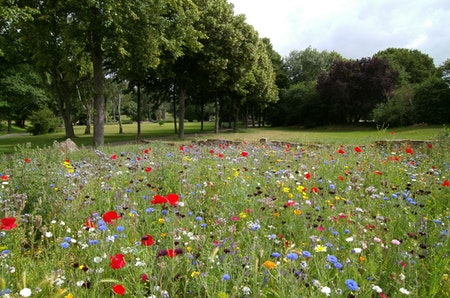
Meadow grazing lasts a long time, making it one of the safest options.
Sunflower Pasture
Sunflower is a main bee pasture when grown in large areas. Early varieties of sunflower begin to bloom in the last decade of June, and later varieties by the end of July and beyond. Sunflower is known for blooming and producing honey for a long time (up to 20 or even 25 days), and can produce up to 20-30kg of honey per hive per season, depending on climatic conditions.
Although some beekeepers believe that moving their colonies to sunflower pasture will weaken their societies due to the resinous sticky mass secreted by sunflower flowers, this is generally not a concern with new selected sunflower hybrids, which secrete insignificant quantities of the sticky substance. Sunflower honey is light yellow and tends to crystallize quickly, but it contains a lot of pollen powder and other beneficial properties, making it a high-quality honey.
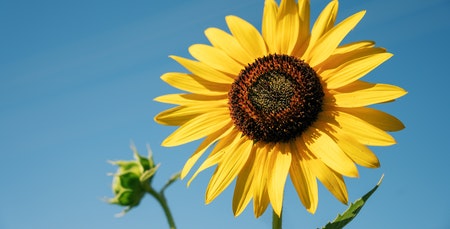
The quality of sunflower honey can vary depending on the variety of sunflower, with some domestic high-yielding varieties providing a safe and rich bee pasture. By collecting nectar from sunflower flowers, bees significantly increase yields and improve the quality of sunflower seeds. Using sunflower pasture makes it easier to achieve high honey production and income from beekeeping, so it should be utilized whenever possible.
Fruit Pasture
Bee grazing from fruit may not be one of the main pastures, but it can be of great importance in extremely favorable grazing conditions. Strong bee colonies can collect a lot of nectar and pollen from certain types of fruit. The fruit pasture is crucial for the following reasons:
- This grazing lasts a long time, with practically no interruptions between the flowering of certain species and varieties of fruit, from the earliest to the latest.
- Fruit grazing arrives early, in March and April, when there is no other pasture available as a rule.
- Some types and varieties of fruit have a lot of pollen powder, which is highly required by many bee colonies at this time of year.
- Fruit pasture can be utilized effectively to make honeycombs from wax bases. Many beekeepers make the mistake of allowing bee colonies to build honeycombs during the main grazing period. For the production of wax, bees need large amounts of honey and pollen powder, as well as time, so they become quite exhausted. It is more beneficial for bee colonies to focus on making honeycombs during fruit grazing, where all the conditions are available, while exclusively focusing on honey production during the main grazing period.
- The worker bees that collect nectar and pollen powder from the flowers of fruit trees perform an essential task. By pollination, they enhance yields and improve the quality of the fruits of cultivated plants.
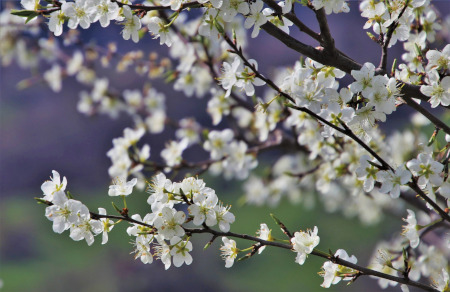
Bees are also happy to visit wild fruit species, which are often more honey-bearing than cultivated ones. As bee pasture, stone, apple, berry, and some types of nuts are significant.
Lavender
Lavender is a plant found in coastal areas, although some species are also found in the continental parts of the country. Lavender typically blooms during the sixth and seventh months of the year, which lasts for about 25 to 35 days. The duration of blooming period depends on the prevailing climatic conditions.
Lavender is a rich source of nectar and bees can collect a lot of nectar from it. In case the bee colonies are well-prepared and strong, with many worker bees of favorable age structure, and if the climatic conditions are suitable, they can collect around 4 to 6 kilograms of nectar daily. In such conditions, a single hive can collect about 40 to 50 kilograms of honey during one season of lavender.
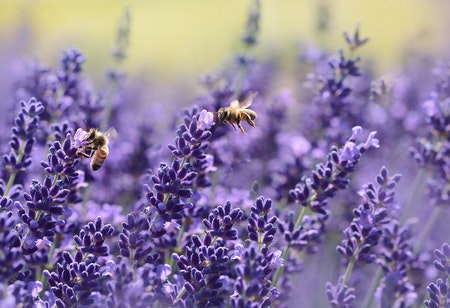
The most important feature of lavender is that it produces a lot of nectar, but very little pollen. During lavender flowering, if there is no other bee pasture nearby that provides pollen, the brood in the hive may be significantly reduced or even disappear. Therefore, it is recommended that the bee colonies spend as much time as possible on pastures that are rich in pollen before grazing on lavender. In that way, the colonies will develop normally and remain strong until the end of the season, and also during new grazing periods, such as on heather or rosemary.
Lavender honey is highly aromatic, with a strong pleasant smell of the plant from which it originates. Its color is light yellow and quite bright. It is considered to be a superior honey in terms of quality, although its taste can be quite sharp. Lavender is also used to produce essential oil, which is commonly used in the pharmaceutical and cosmetic industries. It is also effective in fighting against moths. Lavender is also grown in pure culture to obtain essential oil.
Sage
Sage is a perennial shrubby plant that can grow up to 70 centimeters in height. The bush is thick with many shoots. Sage begins to bloom in the fourth month and the grazing season ends in the sixth month. The plant first blooms in the lower areas, especially near the sea, and then in higher terrains. Sage lasts longer on undulating terrain, which is particularly useful if the entire area is within the flight range of nectar-collecting bees.
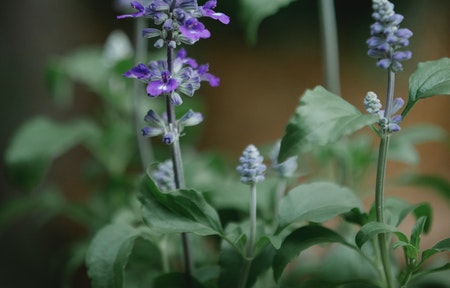
The flowers stay on one plant for about 20 days, with the flowers first opening at the bottom of the plant and gradually opening towards the top. Sage honey is best when the weather is warm and there is a lot of moisture in the air, especially after a period of rain, when the plants are well-developed and lush. However, during periods of dry weather and strong winds, honey production is greatly reduced. Under normal conditions, sage produces a lot of nectar, resulting in good honey yields. That is why many beekeepers move their bees to areas with sage plants.
Sage is of particular importance for coastal karst areas, not only because there is no other significant pasture during its flowering, but also because in some areas, there is a dry grazing period after the sage blooming period ends. Therefore, beekeepers leave sage honey in reserve to feed bee colonies during this extended grazing period.
Sage honey has a specific scent of sage flowers. Its color is light yellow, with a slight greenish hue. The great advantage of this honey is that it takes a long time to crystallize, and when it does, its crystals are somewhat larger. Sage honey has a pleasant taste, with a light dose of bitterness that is not unpleasant. Sage honey is one of the most expensive types of honey.
arrow_upward